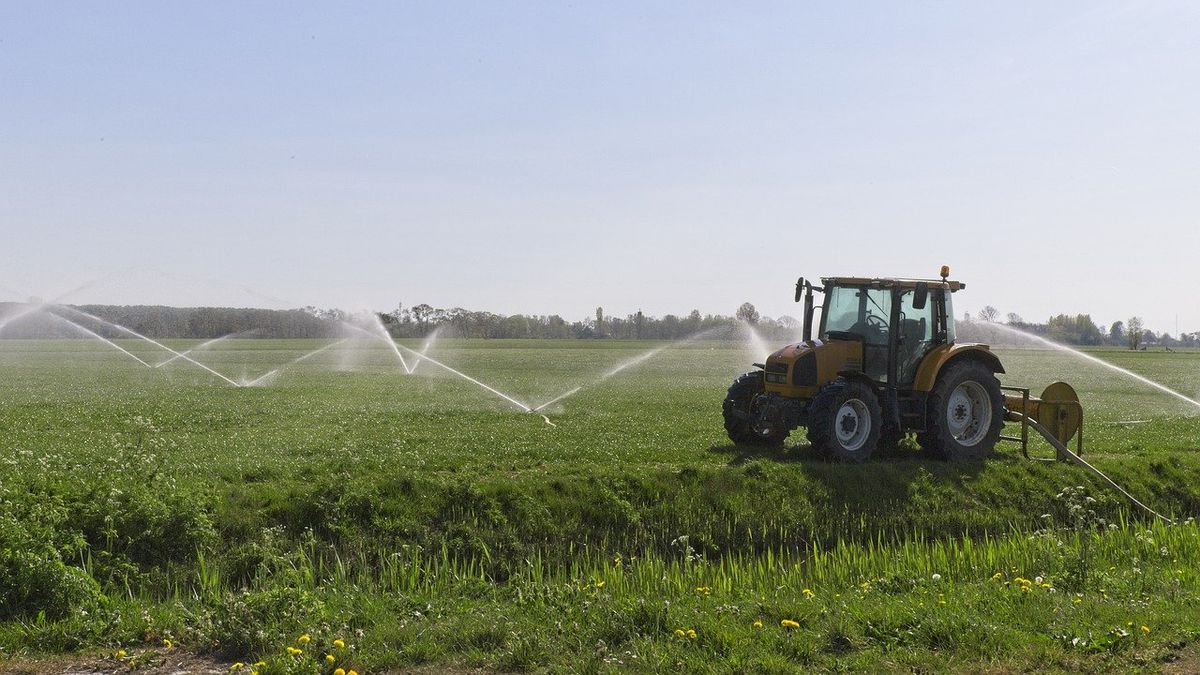The economy of Uruguay could grow, on average, a 2.9% each year until 2030 if irrigation technologies were expanded throughout the country, according to the latest study by the Center for the Study of Economic and Social Reality (Ceres).
The extreme drought that affects the entire country brought back to the table the discussion on the need to implement and expand irrigation systems to face the future water deficit that Uruguay will suffer in a context of climate crisis that is here to stay, with an increase of the maximum temperature of 1.5°C by 2040 and the increase in water demand by production systems.
In this sense, the report “Irrigation and productivity. Potential benefits of irrigation expansion in Uruguay” del Ceres points out the opportunities that this type of initiative will have for livestock and agricultural production —particularly in corn and soybean crops— in terms of expansion.
In this way and with growth rate that they maintained during the last three years, according to the study, the almost 40 thousand hectares that are currently under irrigation in soybean and corn they could multiply until reaching around 300,000 hectares by 2030. In the case of livestock, which has a smaller amount of irrigated surface, 250 modules could be introduced each year that manage to irrigate up to 100 hectares each, also in the same horizon temporary.
Based on this scenario, Ceres estimated a total impact per year —considering the productive linkages throughout the economy— of $2.5 billion; and a cumulative amount of 10,000 million dollars by 2030. The investment necessary for the installation of the irrigation systems, for its part, would be 1,800 million dollars, which would generate, in turn, the progressive increase of the activity hand in hand with the increase in exports, the magnitude of which would reach 3,900 million dollars. Dollars.
Ultimately, this impact would translate into a 4.8% growth in the Gross Domestic Product (GDP), which would leave an economy 2.9% larger each year of the following compared to a scenario with the current risk. Only due to the gradual introduction of irrigation systems, the full impact of the investment at that time would generate additional GDP growth of 1.7%.
The importance of investing in irrigation
The current situation in the countryside is desperate, even with the recent rains, which, although they have eased momentarily, are far from being enough to reverse the consequences of the drought.
In this sense, as the study of Ceres opportunely points out, the Ministry of Economy and Finance (MEF) In February, it estimated direct losses of 1,175 million dollars —close to 2% of GDP— for the agricultural sector during 2023: 490 million for agriculture due to crop loss and lower yields; 440 million for livestock due to lower performance; 140 million in dairy; and 145 million dollars for pastures.
Currently, the losses are already estimated at 1.8 billion dollars, close to 3% of GDP.
The truth is that the situation of extreme drought will become more and more common year after year, so the need to act in preventive terms It becomes pressing for the sector. And the expansion of irrigation systems is a profitable and effective alternative.
This would not only benefit the agricultural sector, but also employment and State income in terms of tax payments: with the estimated increase of Ceres in irrigated hectares, each year it would generate 80 million dollars in concept of Income Tax from Economic Activities (IRAE) and another 70 million dollars for the increase in electricity consumption.
Likewise, it is necessary to consider that the introduction of irrigation has allowed an increase in yield of more than 80% in corn and 40% in soybean, respectively, on average in the last six years; achieving that in seasons of low rainfall the yields doubled in both crops.
On the other hand, the implementation of irrigation in livestock shows a significant increase in the procreation rate and in the kilos obtained.
Based on these results, Ceres proposes a set of public policies and concrete measures: the launch of a Power Plan to be able to extend the energy lines; maintain the regime Commission for the Application of the Investment Law (Comap) and promote the extension to agricultural companies that already contribute to the expansion of irrigation and there is room to grow; more financing alternatives and dissemination activities regarding the implementation of irrigation among producers.
Source: Ambito




